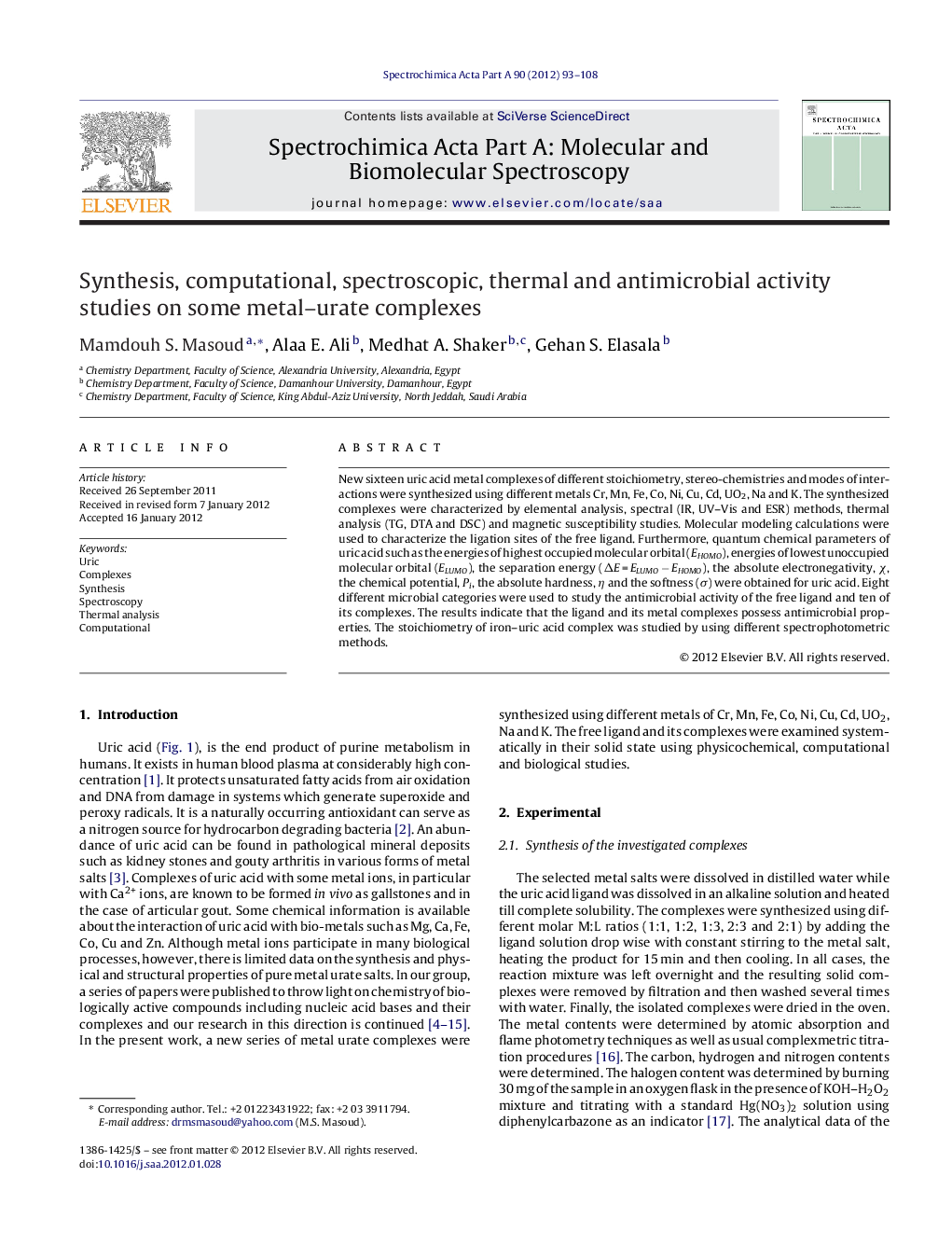| Article ID | Journal | Published Year | Pages | File Type |
|---|---|---|---|---|
| 1231997 | Spectrochimica Acta Part A: Molecular and Biomolecular Spectroscopy | 2012 | 16 Pages |
New sixteen uric acid metal complexes of different stoichiometry, stereo-chemistries and modes of interactions were synthesized using different metals Cr, Mn, Fe, Co, Ni, Cu, Cd, UO2, Na and K. The synthesized complexes were characterized by elemental analysis, spectral (IR, UV–Vis and ESR) methods, thermal analysis (TG, DTA and DSC) and magnetic susceptibility studies. Molecular modeling calculations were used to characterize the ligation sites of the free ligand. Furthermore, quantum chemical parameters of uric acid such as the energies of highest occupied molecular orbital (EHOMO), energies of lowest unoccupied molecular orbital (ELUMO), the separation energy (ΔE = ELUMO − EHOMO), the absolute electronegativity, χ, the chemical potential, Pi, the absolute hardness, η and the softness (σ) were obtained for uric acid. Eight different microbial categories were used to study the antimicrobial activity of the free ligand and ten of its complexes. The results indicate that the ligand and its metal complexes possess antimicrobial properties. The stoichiometry of iron–uric acid complex was studied by using different spectrophotometric methods.
Graphical abstractMany uric acid metal complexes of different stoichiometries were synthesized and characterized by different techniques. Computational chemistry was used to characterize the ligating sites, energies of highest occupied molecular, energies of lowest unoccupied molecular orbital, separation energy, absolute electronegativity, chemical potential, absolute hardness, and softness for uric acid. Antimicrobial activity of the free ligand and its complexes was investigated. The Fe3+–uric acid interaction was spectroscopically studied.Figure optionsDownload full-size imageDownload as PowerPoint slideHighlights► Some uric acid complexes were synthesized and characterized. ► The thermal behavior of the complexes was studied by TG, DTA and DSC techniques. ► The antimicrobial activity of eight different microbial categories was tested. ► The Fe3+–uric acid interaction was studied by different spectroscopic.
